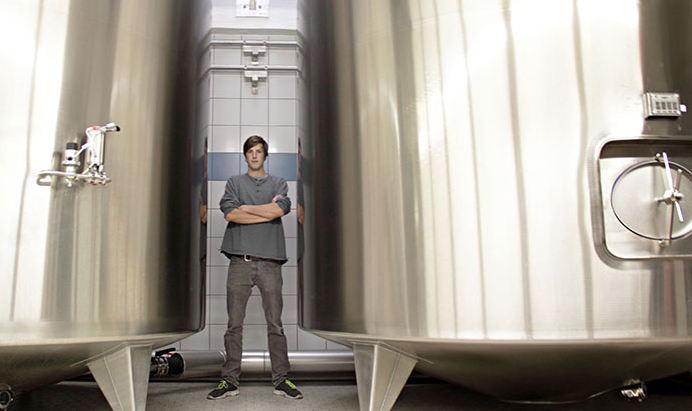A decade on, the NDIS has had triumphs, challenges and controversies. Where to from here?
- Written by Helen Dickinson, Professor, Public Service Research, UNSW Sydney

Officially launched in July 2013, the National Disability Insurance Scheme (NDIS) reached full rollout in 2020.
The idea for such a scheme existed since the Whitlam government in the 1970s, but only really gathered steam after Australia became one of the original state signatories to the United Nations Convention on the Rights of Persons with Disabilities, in 2007.
Against an international backdrop of increasing personalisation of disability services, disability campaigners in Australia fought to have an individualised scheme implemented here.
A decade later, Australians with disability, their families, advocates and support providers are waiting for the NDIS independent review and Disability Royal Commission findings, both due around October. The NDIS review published its interim report today, based on what they’ve heard so far. But we already know the scheme has been transformative for some, intensely disappointing for others and the subject of controversy.
The goal posts
Intended to be a no-fault insurance scheme for Australians with severe and permanent disability, the NDIS was to provide adequate support regardless of who they are, where they live or how their disability came about. It would be administered at the federal level with joint funding from state and territory governments.
It would also aim to foster inclusion and community awareness and provide information and referrals to services outside the NDIS (such as health and education). Specialised supports (such as personal care and therapies) for those with significant and permanent impairment, would be funded directly by the scheme and allocated via individual budgets.
But in the years since, most of the focus has been on personalised plans, with goals around inclusion and community falling by the wayside.
How much funding someone receives is determined through meeting with NDIS “planners”, who explore participants’ goals and what they need to achieve these goals. In determining supports, the National Disability Insurance Agency (NDIA), which administers the NDIS, must consider what is “reasonable and necessary” for the scheme to fund. Once a plan has been established, NDIS participants can engage providers from a market to deliver the services.
Importantly, the NDIS is meant to take a lifelong view of disability funding. Unlike the previous crisis-driven system, the idea of the NDIS is to invest money in the short term (early intervention) to save money in the longer term – when disability may have progressed to a point where the person can’t live independently or undertake paid work. Investment in disability care improves social and economic participation and independence.
Debates and controversies
Many issues have surfaced over the first decade of the NDIS, including:
Co-design
The NDIA has also not always been seen to work in partnership with disabled Australians to co-design the scheme. A number of failed reforms have damaged trust too.
But in 2022, the NDIS Act 2013 was changed to embed the principle of co-design into the legislation and new funding followed. Changes in NDIA leadership saw, for the first time, the appointment of a disabled person to the chair of the agency, along with several new directors with disability.
Read more: A disabled NDIA chair is a great first move in the NDIS reset. Here's what should happen next
Costs
Higher participant numbers than originally forecast have increased scheme costs. Now expected to cost A$50 billion by 2025, the NDIS will overtake the cost of Medicare or defence. Critics argue the NDIS is unaffordable.
But looking at costs alone does not tell us everything we need to know about the scheme. For every dollar spent on the NDIS, $2.25 is created in value for the Australian economy. As NDIS costs increase, so do the economic benefits.
Also, increased funding does not mean all people with disability have access to more support. The NDIS has arguably become “the only game in town” for disability funding, while the states and territories have quietly defunded previously existing programs. While some people who qualify for individual funding packages can access more supports than before the NDIS, services for the much larger group who are not eligible for individual budgets have largely dried up.
Some of the increase in NDIS costs can be traced to mainstream services ceasing disability services, meaning people must try and access the NDIS to get disability supports.
Inequality and administrative burden
NDIS participants report many problems with using their NDIS plans and appealing NDIS decisions. The complexity of how the NDIS currently works has resulted in high administrative burdens for some participants.
This is compounded by “thin markets” where there are often not enough providers to deliver services.
For example, Indigenous people experience high levels of disability, but research describes cultural and practical barriers to their full inclusion in the scheme.
Research also suggests women and girls, people involved in the criminal justice system, people from culturally and linguistically diverse backgrounds and people with psychosocial disabilities are also disadvantaged within the scheme.
In our research, incorporating the lived experience of NDIS participants, some people have said their lives have been transformed through the NDIS. But many other participants also report frustration, anger, despair, disempowerment and a sense that interacting with the NDIS constitutes a full time job.
Untapped potential
One reason the critiques of the NDIS are so fierce is people have seen what the scheme can do and want it to live up to the promise of promoting inclusion and wellbeing for all participants.
There are ongoing concerns about costs. These might be mitigated through better systems to reduce provider fraud and unethical practices such as overcharging, cherry picking the “easier” or more lucrative clients, and client capture (where a provider arranges to deliver all a person’s NDIS services).
Boosting the NDIA workforce, as announced by NDIS Minister Bill Shorten, should help and also reduce mistakes and delays.
And there needs to be capacity development for NDIS participants. It’s currently very hard to learn how to use the scheme, but informed consumers can choose the right providers for their needs and speak up when they encounter problems and mistreatment.
Read more: The government says NDIS supports should be 'evidence-based' – but can they be?
A new decade
Next year will see re-negotiations of funding agreements with states and territories begin – with the federal government likely to ask them to address some of the gaps in mainstream and community services.
It is clear NDIS reform will stay front-of-mind for some time yet. It is crucial people with disability remain central and involved in genuinely co-designing the second decade of the NDIS and beyond.
Authors: Helen Dickinson, Professor, Public Service Research, UNSW Sydney

















